DENTAL DISEASE
Questions you might ask yourself
Q: What is the most common infectious disease in man across the world?
A: dental disease (periodontal disease)
Q: What is the most common infectious disease of dogs across the world?
A: dental disease (periodontal disease)
Q: What is the most common infectious disease of cats across the world?
A: dental disease (periodontal disease)
Q: By what age are 80% of all dogs affected with periodontal disease?
A: 2 years of age
Q: By what age are 70% of all cats affected with periodontal disease?
A: 2 years of age
Periodontal Disease (The Issue – The Problem)
 Dental disease is periodontal disease. The same is true in man. Scientifically periodontal disease is a combination of:
Dental disease is periodontal disease. The same is true in man. Scientifically periodontal disease is a combination of:
- gingivitis – inflammation of the gingival (the gums)
- periodontitis – inflammation of the periodontium ( the periodontal ligament/tissue which connects the tooth to the tooth socket
So - periodontal disease is inflammation & subsequent infection of the periodontal ligament which attaches the tooth to its boney socket in the jaw. It is caused by a buildup of plaque (mouth ‘goo’) and calculus (tartar). Plaque is mouth ‘goo’ - that sticky, colorless, odiferous, bacteria laden film which forms constantly on teeth. The cause of bad breath is plaque.
With time and if not removed, the gums recede and become infected with bacteria – not good. The gums develop pockets which are full of bacteria and pus. The teeth become loose. Bacteria and immune complexes from the periodontal disease travel elsewhere in the body to cause disease (can be significant problem – see below). Eventually the teeth fall out, or just sit there in dental disarray. And of course there is mouth discomfort.
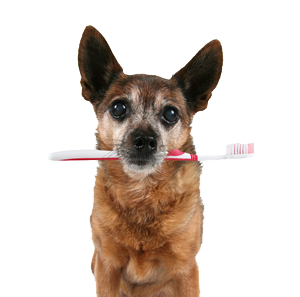 Why Care About Dental Disease?
Why Care About Dental Disease?
Dental disease is a HUGE problem in dogs and cats.
Dental disease can affect how long your pet lives, and it can affect the quality of his/her life during this living. Dogs & cats can’t talk. So they can’t tell us how they are doing. They depend on us to take care of them.
It has been shown that dogs & cats with high quality dental care (home & veterinary) and ‘clean’ mouths have:
- fewer health problems
- a higher quality of life
- and they can live longer (less kidney disease)
The bacterial infection and chemical factors released from periodontal disease can adversely affect a number of body systems. And this infection & chemical factors can actually cause & worsen medical conditions elsewhere in the body. This periodontal disease & bacterial infection goes on 24 hours per day, 7 days per week. Think about it.
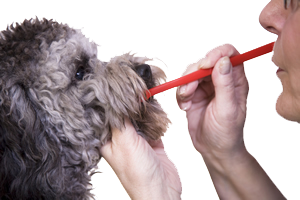
Organ & body systems affected
- kidney disease
- urinary bladder infection
- heart valve infection
- lung disease (airway tube disease)
Signs Of Dental Disease
Most common signs:
- no obvious sign at all to most pet owners
Common signs:
- bad breath
- red gums
- loose teeth
- missing teeth
Less common signs:
- swollen gums
- bleeding gums
- pet chews on one side of mouth
- overly delicate eating & chewing
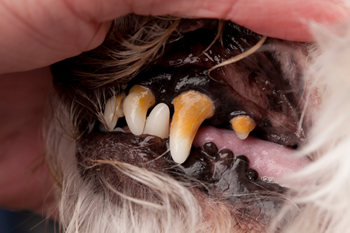
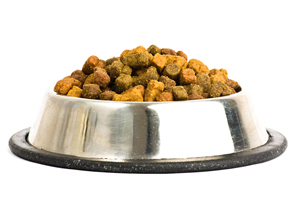 Preventing Dental Disease
Preventing Dental Disease
- periodic veterinary dental examinations – at least yearly with the annual examination
- feed 100% hard, dry dog & cat food
- feed no canned pet food, no semi-moist pet food, no people food, & no table scraps
- mix no water in/on the dry pet food
- the whole meal must be hard, dry pet food. The mechanical abrasive action on the teeth which occurs when eating hard, dry food helps to remove plaque and to decrease dental tartar buildup.Think about this. It makes sense. Imagine if you only ate pudding and never brushed your teeth.
Note: there are & can be exceptions to this for any number of medical reasons - This is purely the opinion of Countryside. Not all veterinarians would agree with this.
- daily chewing exercises - the use of ‘tools’ (this section is for dogs)
- provides gum exercise
- removes plaque & some tartar
- should be daily – why not 24/7?
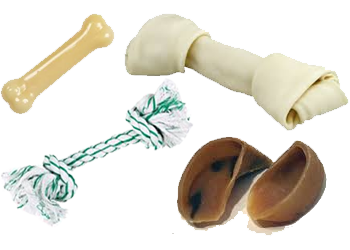 We call these ‘tools’
We call these ‘tools’
- good for teeth
- keep dog happy & content
- absolutely no calories !!!
- dental ‘tools’ have no calories!!!
- if there are calories – product is a treat & not a ‘tool’
- huge issue
- understand the difference - ‘tool’ versus treat
- don’t trust the label – they fib (no, they lie)
- You do not eat crackers to help your teeth
- examples of these dental ‘tools’ :
- rawhides
- hard rubber products
- Nylabone, Gumabone
- cow hoofs
- bully stick
- Buda rope
- artificial bones
- examples of these dental ‘tools’ :
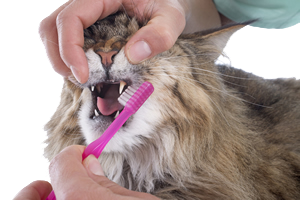 daily home teeth cleaning -
absolutely essential-
must be done daily
(7 days/week)
daily home teeth cleaning -
absolutely essential-
must be done daily
(7 days/week)
- use the Countryside method (infant washcloth), easy to do – 10 to 20 seconds (ask us how)
- small brush
- dentifrices, gels, toothpastes really only used to make mouth wet- probably don’t need
- chlorhexidine has been shown to reduce plaque
problem – available in liquid, but not in more user friendly gel - avoid human toothpaste (contains fluoride)
Treating Dental Disease
- veterinary dental examination & evaluation
- veterinary dentistry
- anesthesia
- gingivectomy/gingivoplasty (cutting back the gum pockets)
- extractions (as needed & a good thing)
- root planning
- tooth ultrasonic scaling & cleaning
- tooth polishing

